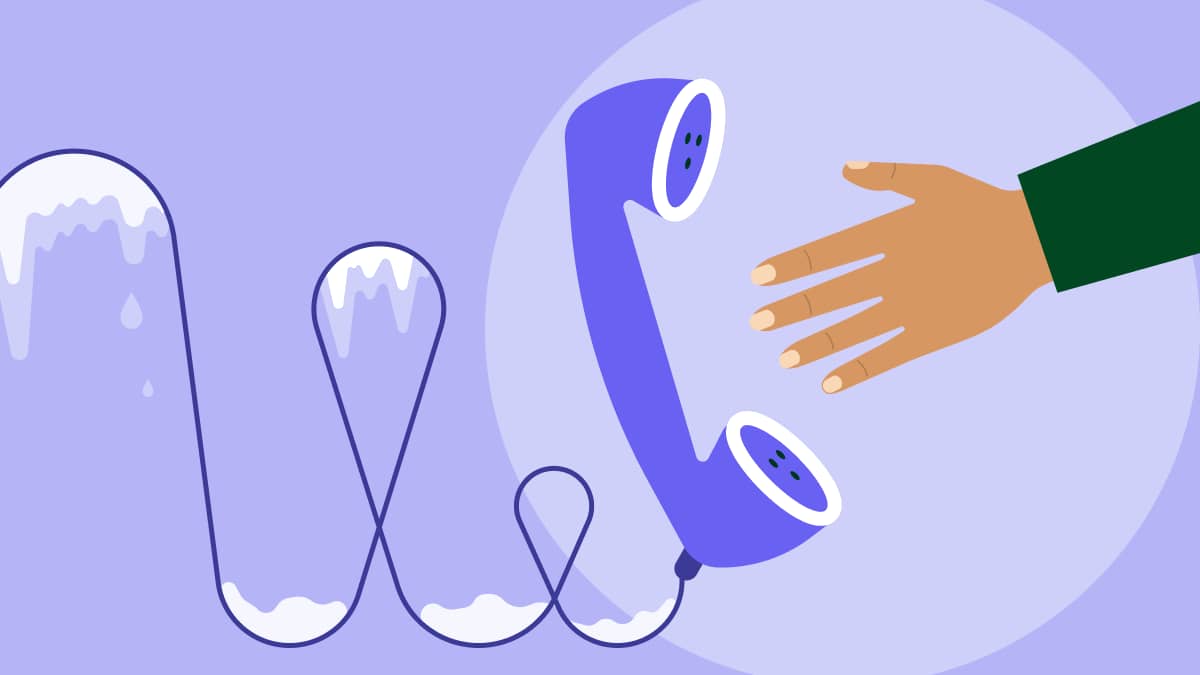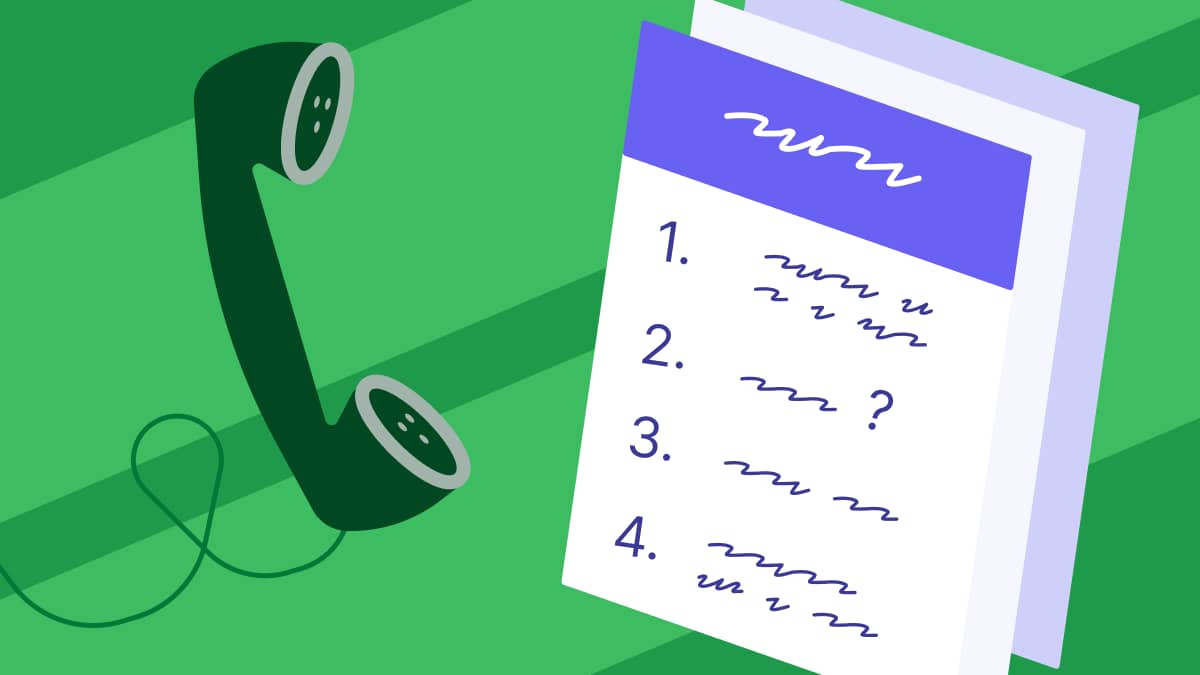Two tried and tested ways to get in touch with potential customers exist in sales: the cold call and the cold email.
Some salespeople favor calls. Some reps swear by emails. But is one method of contacting a prospect better than the other? Read on to learn more about the benefits and drawbacks of both.
The control of the cold call
The very mention of the cold call is enough to turn off some prospects, and even some reps. Who likes being interrupted in the middle of their workday to hear a sales pitch? Yet the sales cold call has historically been one of the most effective tools for sales reps.
One of the biggest strengths of cold calling is the control a phone call gives the sales rep, according to author and trainer John Chepyha.
“The No. 1 rule that people miss out on is: The person that’s asking questions is always the person who's in control of that conversation,” he said. “One of the things with email is you have no control over that conversation.”
Chepyha advises his clients to avoid the sales pitch at the beginning of the call, and to keep their introductions short and sweet before asking their primary question. (For example, his own question is "Out of curiosity, can you tell me how important cold calling is to your new business development process?")
And then Chepyha tells reps to listen to what the prospect says. An open-ended question like his will result in one of three possible answers — yes, no or maybe — and an experienced cold caller will be ready for each of those answers.
“One of the biggest benefits of cold calling is the fact that it's 100% predictable,” he said. “You have to understand what the answer is going to be to the questions that you're asking. When I ask my primary question, I know what the possible answers are, and I know how to respond to each and every one of them.”
Cold call expert Kraig Kleeman loves cold calling for its yield.
“I have one client that calls the chief level executives, literally people with the word chief in their title, for an average size company of $40 billion,” he said. “We get a 26% conversion rate, meaning we do 100 outreaches. I’m not talking response; I’m talking 100 outreaches produces 26 meetings.”
The problem with traditional cold calls, he said, is that people usually don’t want to be on the receiving end of one.
“No-one — no-one — wants an unsolicited sales call. They run for the hills from that sort of thing,” he said.
His cold calling methodology? Kleeman and his clients research the issues that are important to their target buyers, put together information that will interest those buyers, and call buyers to invite them to a 15-minute research briefing on those issues. The goal of his calls: Get prospects into a sales meeting so that reps can talk to the buyers and learn more about those buyers’ needs.
“What sellers need to do is learn to lead with fact-based research that is highly relevant and highly germane to the professional mandates and the personal values, the core values, of their targets,” Kleeman said.
Despite cold calling’s benefits, there are many reps who don’t like making calls; they fear failure and rejection.
“That’s a self-sabotaging form of protecting ourselves from failure,” Chepyha said. “Even though cold calling is something that we do all the time, we don't understand the process of making it work effectively, and that's where the problem comes in for people.”
He’s not a huge fan of email because email lacks the same control.
“You don't know whether it was read or not. You don't know what the reaction to it is,” he said.
Grow Your Sales With Sales Pipeline Course
2-week email course where you’ll learn how to get
- more deals
- bigger deals
- with better conversion
- in less time
Subscribe Here for the Sales Pipeline Course
Heat up your cold emails with 25 customizable email templates
The incredible, scalable cold email
While a cold email doesn’t allow a rep to control a conversation the way they can when they're on the phone with a prospect, the cold email has a major advantage over the cold call — reps can send out a lot of email in a short span of time.
The scalability of cold emailing is great for sales teams that don’t have the resources to make a lot of cold calls.
“You can mail merge out 1,000 emails a lot faster than you can make 1,000 cold calls,” Heather R Morgan, CEO of Salesfolk, a company that produces cold emails, said, “and once you nail the right email template for your audience, there's no difference between sending one, 100, 1,000, or 10,000 emails, assuming you have a good quality list with proper targeting.”
The trick is to do your research, not to be spammy. The important thing to remember, Morgan said, is that you’re trying to start a conversation.
“Emails should NEVER be self-focused monologues that ramble on about the sales rep's company,” she said. “They need to make it seem like the rep actually cares about the prospect and their business, which doesn't work well when you ramble on about yourself.”
Emails ought to feel personal and thoughtful, and they should be targeted, if not at a specific person, at a persona. (Morgan believes in building comprehensive buyer personas.)
“I like to take a sample of about 10 to15 leads from a given persona or audience, such as ‘VP sales at SaaS companies of 100-500 employees’ and do thorough research on those 10-15 individuals,” she said. “I try to get as much information as I can for these individuals and then try to see where there's overlap between them. Then I can create really targeted email templates that can scale to the hundreds or thousands, so long as the audience is still the same.”
Morgan said that most email campaigns should be aiming for a positive/neutral response rate of between 10-35%. If the response rate is less than 10%, something is wrong.
Asked what she thinks about cold calls, Morgan said there’s no downside to being good on the phone — most reps will have to get on the phone with their customers at some point. Still, as people become more reluctant to pick up the phone, many reps are less and less interested in cold calling.
“Some people might say ‘If you can't cold call, then don't be in sales,’ but as the world becomes increasingly digital, I think the salespeople who are not able to ‘sell digitally’ via email and social will be the ones that really fall behind,” she said.
The combined power of cold calls and cold emails
That said, why choose between calls and email? There is no need to eschew cold calling in favor of cold emails, or vice versa. Both calls and emails are usually used together in sales campaigns.
Asking which is better isn’t a fair question, Kleeman said.
“That question lacks intellectual skill. That question actually begs intellectual poverty,” he said. “The truth is that the best scenario is not either/or. It’s both/and.”
Morgan said that salespeople need to choose the method that works best for them, and especially for their prospective customers.
“Know your audience, and do what makes sense for them. See what works, and triple down on that,” she said.
In general, cold emails and cold calls share the same guiding principles:
Successful sales reps should be thoughtful. They should respect their prospects’ time and needs. Chepyha advises reps to acknowledge, upfront, the fact that a cold call is, essentially, an interruption.
“Every time you call somebody on the phone, whether it's your mother or your best friend or your worst enemy or a complete stranger — it doesn't matter who you're calling — you're always, always, interrupting them,” he said. “You want to establish rapport, especially with somebody you've never talked to before, so you've got to acknowledge that right at the beginning of the call.”
Sales calls and sales emails aren’t about the caller — they’re about the person you’re calling. Sales reps should try to get the prospects to talk about their needs, rather than rambling on about the product they’re selling.
You’ll need several touches before you get a response. Chepyha said that a rep can expect to call a prospect about seven or eight times. Morgan says that emailers should send out eight emails to get the maximum response rate.
If your pitch isn’t persuasive, it doesn’t matter what format you’re using to contact your prospects. If the cold calling script you’re using for your calls isn’t well thought-out, or if you’re just copy-pasting bad emails and blasting them out to everyone on your contact list, you’re not going to get a response.
“Everything gets ignored when it's not compelling. The same goes for cold calls and everything else,” Morgan said. “People aren't going to respond to you unless you're interesting and add value that's relevant to them. Solve their problems or help them be more efficient/make more money: then they'll pay attention.






